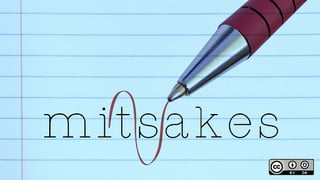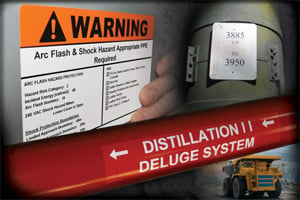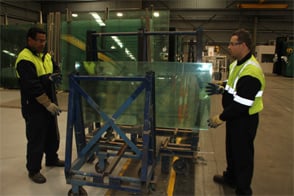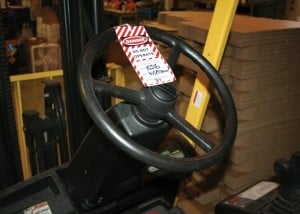Every mining company knows that a safe working environment for everyone, including sub-contractors, is the mine site’s responsibility – even if headquarters is in Australia, Canada, or the United States.
Getting your mine site up to scratch, to meet MSHA (Mine Safety and Health Administration) or Department of Mines and Petroleum inspections can be a lot of work.
But how do you easily and cost effectively improve
mine safety communication?
Safety and budget-conscious mines like Barrick Gold Corporation, Rio Tinto and Newmont Mining Corporation
create mining safety labels on-site with thermal transfer printers - satisfying Government regulations and keeping operations running smoothly.
Mine equipment operators, mill operators and maintenance personnel face dangers every day, but traditional safety sign ordering methods are costly and too slow to make an immediate impact on safety.
Many Environmental Health & Safety (EHS) managers still dig through thick catalogues in search of just the right sign with the correct dimensions, colors and Government compliant language. Requisitions slow the process further.
Ordering custom signs from sign shops is ridiculously expensive and slow - especially for delivery to remote locations. You’ll wait weeks and weeks - nearly forgetting you ordered the signs in the first place.
This process hinders getting signs up quickly or even at all especially when you have to buy 20 or 30 signs to get a price break even though you only needed a couple.
While, older labelling systems are expensive and unwieldy.
The good news?
Thermal transfer printers may be ordered directly and delivered overnight to remote sites. Almost
immediately, you can create all the signs and labels you need and they’ll perform
anywhere in and around the mine. Thermal transfer printers use heat to literally “bake” on graphics and text to vinyl and other supplies which have been tested to perform under the most demanding conditions.
It's an easy and quick way to get your
workplace safety communication happening instantly.
Mining Safety Tips & Guidelines
So while no two mines are alike, there’s a good chance you’ll need the following signs:
- Traffic signs
- Facility signs
- No smoking/cell phone signs
- Mine permit boundary signs
- Identification tags for exploration
- Pipe markers
- Valve tags
- Arc Flash NFPA70E signs
Signs also provide:
- Radio call number information
- Instructions about personal protection equipment (PPE)
- Start-up procedures
- Marking tools with colors, numbers and barcodes helps reduce theft and loss and color marking hard hats and equipment to differentiate shifts and departments helps keep people as well as tools in their sector. When short-term electrical outages occur, signs that are visible in the dark help people find their way.
- Signs and labels created using the thermal transfer process will last for years. With specialty supplies, they will adhere to virtually any surface.
Generic Signs Don’t Cut It
Signs and labels that are site specific to company policy make all the difference for new hires, visitors and subcontractors. Just like
customised training materials, customised site signs improve site safety effectiveness. Multilingual signs support a global workplace encompassing Australia, Africa, Europe, Asia, North and South America.
Call it the autonomy of the label printer. You control when and how frequently you create signs and labels. You see an accident waiting to happen, zip right back to your desk, print out a sign and post it on the spot. No waiting for approval. No paperwork to fill out. No injury or worse.
Guest author: Martin Carter, Global Mining Manager for Graphic Products, works directly with mine safety managers to customize and implement safety identification programs that meet compliance requirements while improving mine communications and security. Martin Carter, Graphic Products,
mcarter@graphicproducts.com,1-800-788-5572 Ext. 5683 or visit
www.DuraLabel.com. Photo credit: Duralabel








